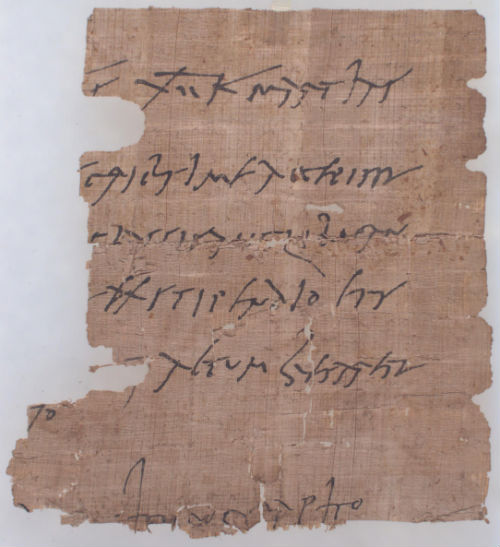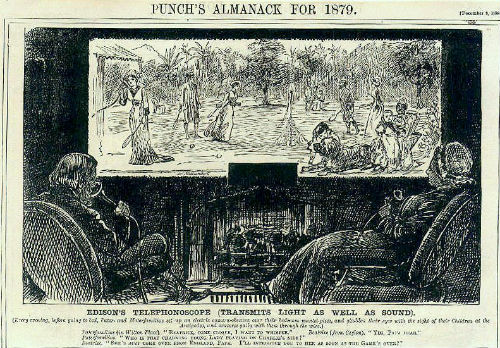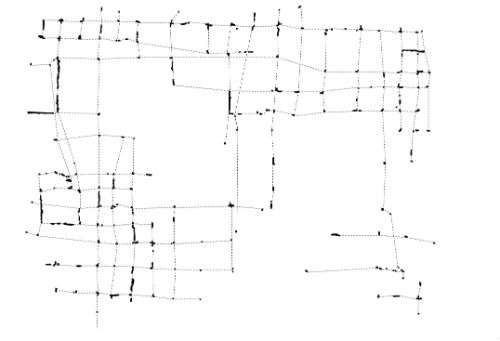Works Cited
Aarseth 1997 Aarseth, E. J. Cybertext: Perspectives on Ergodic Literature. Baltimore, MD, Johns
Hopkins University Press (1997).
Benjamin 2008 Benjamin, W. The
Work of Art in the Age of Its Technological Reproducibility, and Other Writings on
Media. Ed. M. W. Jennings, B. Doherty and T. Y. Levin. Cambridge, MA and
London, The Belknap Press of Harvard University Press (2008).
Burks 1949 Burks, A. W. “Icon,
Index, and Symbol”. Philosophy and Phenomenological
Research, 9.4 (Jun., 1949): 673-89.
De Man 1984 De Man, P. The
Rhetoric of Romanticism. New York, NY, Columbia University Press
(1984).
Deacon 1997 Deacon, T. W. The
Symbolic Species: The Co-evolution of Language and the Brain. London and
New York, NY, Norton (1997).
Dean 2010 Dean, J. Blog Theory:
Feedback and Capture in the Circuits of Drive. Cambridge, Cambridge Polity
Press (2010).
Deleuze 1992 Deleuze, G. Michel
Foucault: Philosopher. Ed. T. J. Armstrong. Hemel Hempstead, Harvester
Wheatsheaf (1992).
Deleuze 2004 Deleuze, G. Desert
Islands and Other Texts, 1953-1974. Ed. D. Lapoujade. Trans. M. McMahon
and C. J. Stivale. New York, NY, Semiotext(e) (2004).
Derrida 1997 Derrida, J. Of
Grammatology. Trans. G. C. Spivak. Baltimore, MD, Johns Hopkins University
Press (1997).
Derrida 2004 Derrida, J. Positions. Trans. A. Bass. London, Continuum (2004).
Devasathan 2010 Devasathan, A. Personal
communications with the authors. Aug. 2010.
Diehl 2009 Diehl, C “The Empty
Space in Structure: Theories of the Zero from Gauthiot to Deleuze”. Diacritics, 38.3 (2009): 93-119.
Drucker 2001 Drucker, J. “Digital
Ontologies: The Ideality of Form in/and Code Storage – Or – Can Graphesis
Challenge Mathesis?”
Leonardo, 34.2 (2001): 141-45.
Drucker 2009 Drucker, J. SpecLab: Digital Aesthestics and Projects in Speculative Computing.
Chicago, IL, University of Chicago Press (2009).
Ezzamel and Hoskin 2002 Ezzamel, M., and Hoskin, K.
“Retheorizing Accounting, Writing and Money with Evidence from
Mesopotamia and Ancient Egypt”. Critical Perspectives
on Accounting, 13.3 (June 2002): 333-67.
Flusser 1986 Flusser, V. “Lecture
2: Crisis in Alphabetic Culture”. Trans. R. M. Novaes.
Into Immaterial Culture lecture series at University of São Paulo (Aug.
1986). 28 Nov. 2012.
http://metafluxlab.net/ Flusser 1990 Flusser, V. “On
Memory (Electronic or Otherwise)”. Leonardo,
23.4 (1990): 397-99.
Flusser 1999 Flusser, V. The
Shape of Things: A Philosophy of Design. Trans. A. Mathews. London,
Reaktion (1999).
Flusser 2004 Flusser, V. Writings. Ed. A. Ströhl. Trans. E. Eisel. Minneapolis, MN and London,
University of Minnesota Press (2004).
Flusser 2005 Flusser, V. Towards
a Philosophy of Photography. London, Reaktion (2005).
Flusser 2007 Flusser, V. “Crisis
of Linearity”. Trans. A. Mers. Bootprint, 1.1
(March 2007): 19-21.
Flusser 2011a Flusser, V. Does
Writing Have a Future? Trans. N. A. Roth. Minneapolis, MN, University of
Minnesota Press (2011).
Flusser 2011b Flusser, V. Into
the Universe of Technical Images. Trans. N. A. Roth. Minneapolis, MN and
London, University of Minnesota Press (2011).
Foucault 1977 Foucault, M. Language, Counter-Memory, Practice: Selected Essays and Interviews by Michel
Foucault. Ed. D. F. Bouchard. Ithaca, NY, Cornell University Press
(1977).
Foucault 1998 Foucault, M. The
Essential Works of Michel Foucault, 1954-1984. Vol. 2: Aesthetics, Method,
and Epistemology. Ed. J. D. Faubion. New York, NY, New Press (1998).
Foucault 2001 Foucault, M. Fearless Speech. Ed. J. Pearson. Los Angeles, CA, Semiotext(e)
(2001).
Frege 1980. Frege, G. The
Foundations of Arithmetic. 2nd rev. ed. Trans.
J. L. Austin. Evanston, IL, Northwestern University Press (1980).
Galloway and Thacker 2007 Galloway, A., and Thacker,
E. The Exploit: A Theory of Networks. Minneapolis, MN,
University of Minnesota Press, 2007.
Groys 2008 Groys, B. Art
Power. Cambridge, MA, The MIT Press (2008).
Heidegger 1992 Heidegger, M. History of the Concept of Time: Prolegomena. Trans. T. Kisiel.
Bloomington, IN, Indiana University Press (1992).
Heidegger 2002 Heidegger, M. The Essence of Truth: On Plato’s Cave Allegory and Theaetetus. Trans. T.
Sadler. London, Continuum (2002).
Kaplan 2000 Kaplan, R. The
Nothing That Is: A Natural History of Zero. Oxford, Oxford University
Press (2000).
King 2000 King, B. “Being Virtual:
Modularity as a Cultural Condition”. Afterimage, 28.2 (Sep.-Oct. 2000): 9-12.
King 2007 King, B. “Modularity and
the Aesthetics of Self-Commodification”. In M. Beaumont, A. Hemingway, E.
Leslie and J. Roberts (eds), As Radical as Reality Itself:
Essays on Marxism and Art for the 21st
Century, Oxford and New York, NY, Peter Lang (2007), pp. 319-46.
Kirsch et al. 1958 Kirsch, R. A., Cahn, L., Ray, L.
C., and Urban, G. H. “Experiments in Processing Pictorial
Information with a Digital Computer”. Proceedings of
the Eastern Joint Computer Conference, 9-13 Dec. 1957, Institute of Radio
Engineers, New York, 1958.
Kittler 1999 Kittler, F. A. Gramophone, Film, Typewriter. Stanford, CA, Stanford University Press
(1999).
Koch 2013 Koch, C. Consciousness:
Confessions of a Romantic Reductionist. Cambridge, MA, MIT Press
(2013).
Kress 2005 Kress, G. “Gains and
Losses: New Forms of Texts, Knowledge, and Learning”. Computers and Composition, 22.1 (2005): 5-22.
Kress, G.
“Reading Images: Multimodality, Representation and New
Media”. Information Design Journal & Document
Design, 12.2 (2004): 110-19.
Locke 1996 Locke, J. An Essay
Concerning Human Understanding. Ed. K. Winkler. Indianapolis, IN, Hackett
(1996).
Malabou 2012 Malabou, C. Ontology of the Accident: An Essay on Destructive Plasticity. Trans. C.
Shread. Cambridge, Polity (2012).
Marx and Engels 1970 Marx, K., and Engels, F. The German Ideology, Part One, with Selections from Parts Two and
Three, together with Marx’s “Introduction to a Critique of
Political Economy”. Trans. C. J. Arthur. New York, NY,
International Publishers (1970).
McKenzie 1999 McKenzie, D. F. Bibliography and the Sociology of Texts. Cambridge, Cambridge University
Press (1999).
Merchant 2007 Merchant, G. “Writing the Future in the Digital Age”. Literacy, 41.3 (2007): 118-28.
Palfrey and Gasser 2008 Palfrey, J., and Gasser, U.
Born Digital: Understanding the First Generation of Digital
Natives. New York, NY, Basic Books (2008).
Peters 2011 Peters, M. A. “Algorithmic Capitalism and Educational Futures”. In M. A. Peters and E.
Bulut (eds), Cognitive Capitalism, Education and Digital
Labor, New York, NY, Peter Lang (2011), pp. 245-58.
Pierce 1974 Pierce, C. S. Collected Papers of Charles Sanders Peirce. Vol. 5. Ed. C. Hartshorne and
P. Weis. Cambridge, MA, Belknap Press (1974).
Plutarch 2011 Plutarch. Caesar. Trans. C. Pelling. Oxford, Oxford University Press (2011).
Posner 1998 Posner, G. J. “Models
of Curriculum Planning”. In L. E. Beyer and M. W. Apple (eds), The Curriculum: Problems, Politics, and Possibilities,
Albany, NY, State University of New York Press (1998), pp. 79-100.
Prensky 2001 Prensky, M. “Digital
Natives, Digital Immigrants”. On the Horizon,
9.5 (2001): 1-6.
Rancière 1995 Rancière, J. On
the Shores of Politics. Trans. L. Heron. New York, NY, Verso
(1995).
Rancière 2004 Rancière, J. The
Politics of Aesthetics: The Distribution of the Sensible. Trans. G.
Rockhill. London, Continuum (2004).
Ricoeur 1990 Ricoeur, P. Time
and Narrative. Vol. 1. Trans. K. McLaughlin, K., and D. Pellauer. Chicago,
IL, University of Chicago Press (1990).
Ritzer and Jurgenson 2010 Ritzer, G., and Jurgenson,
N. “Production, Consumption, Prosumption: The Nature of
Capitalism in the Age of the Digital ‘Prosumer’”. Journal of Consumer Culture, 10.1 (2010): 13-36.
Samuels 2008 Samuels, L. Gaps,
Vexes, and the Digitas. Seminar. English Department, University of
California at Santa Barbara, 2008.
Serres 1982 Serres, M. The
Parasite. Trans. L. R. Scher. Baltimore, MD, Johns Hopkins University
Press, 1982.
Sheely 2008 Sheely, S. “Latour
Meets the Digital Natives: What Do We Really Know?”
Proceedings from ASCILITE 2008, Melbourne, 2008.
Stiegler 1998 Stiegler, B. Technics and Time: The Fault of Epimetheus. Stanford, CA, Stanford
University Press (1998).
Sturm and Turner 2011 Sturm, S., and Turner,
S. “Knowledge Waves: New Zealand as Educational
Enterprise”. Australian Journal of
Communication, 38.3, The Political Economy of Communication (2011):
153-77.
Suarez-Villa 2009 Suarez-Villa, L. Technocapitalism: A Critical Perspective on Technological Innovation
and Corporatism. Philadelphia, PA, Temple University Press (2009).
Toffler 1980 Toffler, A. The
Third Wave. New York, NY, William Morrow (1980).
Toscano 2008 Toscano, A. “The
Open Secret of Real Abstraction”. Rethinking
Marxism, 20.2 (2008): 273-87.
Virilio 1991 Virilio, P. The
Aesthetics of Disappearance. Trans. P. Beitchman. New York, NY,
Semiotext[e] (1991).
Virilio 2007 Virilio, P. The
Original Accident. Cambridge, Polity Press (2007).
Wardrip-Fruin 2008 Wardrip-Fruin, N. “Reading Digital Literature: Surface, Data, Interaction, and
Expressive Processing”. In R. Siemens and S. Schreibman (eds), A Companion to Digital Literary Studies, London, UK, Basil
Blackwell (2008), pp. 163-82.
Whitehead and Russell 1997 Whitehead, A. N. and
Russell, B. Principia Mathematica to *56. Cambridge,
Cambridge University Press (1997).
Wittgenstein 1953 Wittgenstein, L. Philosophical Investigations. Trans. G. E. M. Anscombe. New
York, NY, Macmillan (1953).
Wittgenstein 2001 Wittgenstein, L. Tractatus Logico-Philosophicus. Trans. D. F. Pears and B. F.
McGuinness. London and New York, NY, Routledge (2001).
Wurth 2006 Wurth, K. B. “Multimediality, Intermediality, and Medially Complex Digital Poetry”.
RiLUnE [Review of Literatures of the European Union],
5 (2006): 1-18.
de Campos et al. 1962 de Campos, A., Pignatari, D.,
and de Campos, D. Antologia Noigandres: Do Verso à Poesia
Concreta. Vol. 5. São Paulo, Massao Ohno (1962).
de Cauter 2002 de Cauter, L. “The Capsular Civilization”. In N. Leach (ed.), The
Hieroglyphics of Space: Reading and Experiencing the Modern Metropolis,
London and New York, NY, Routledge (2002), pp. 271-80.

















